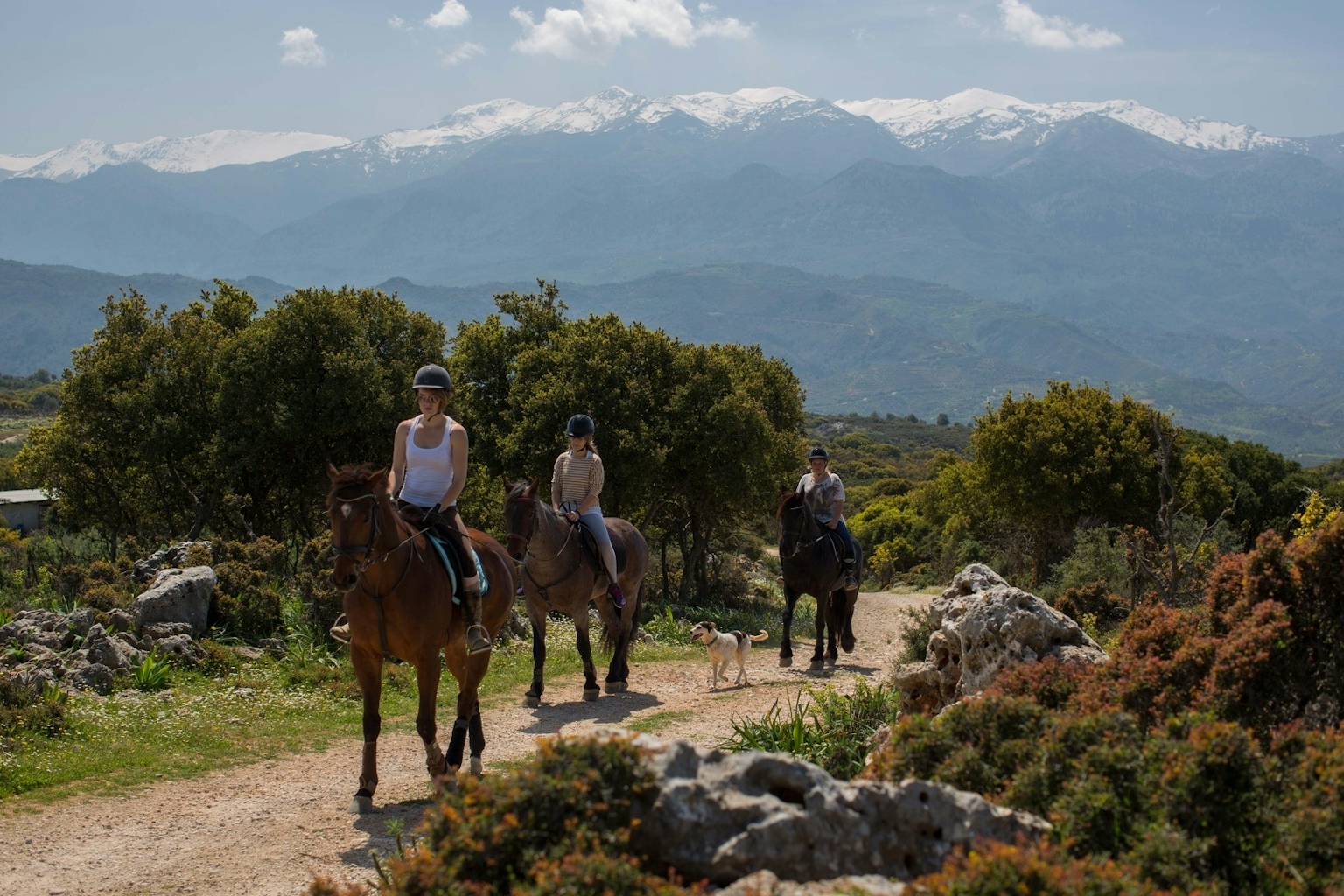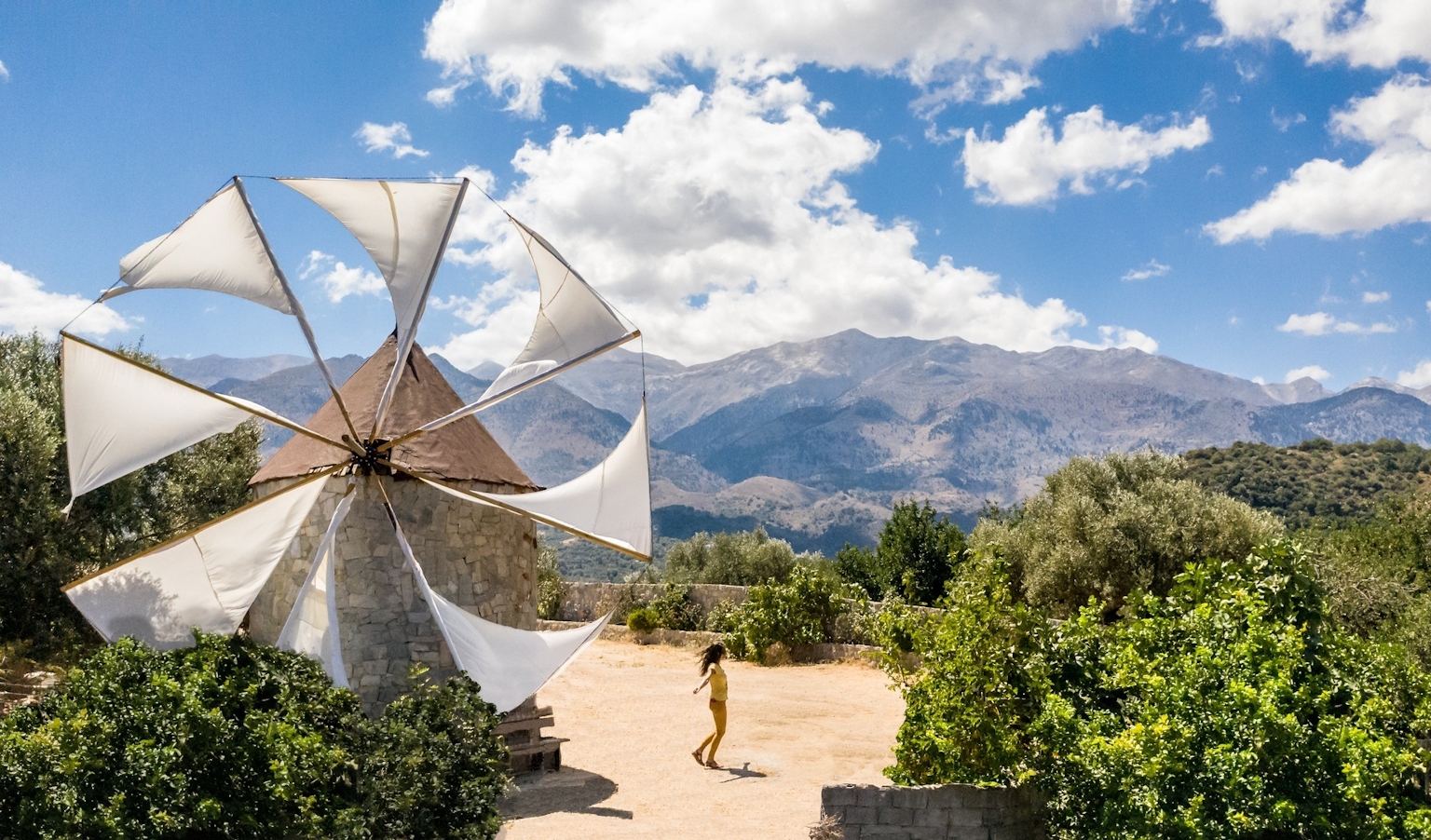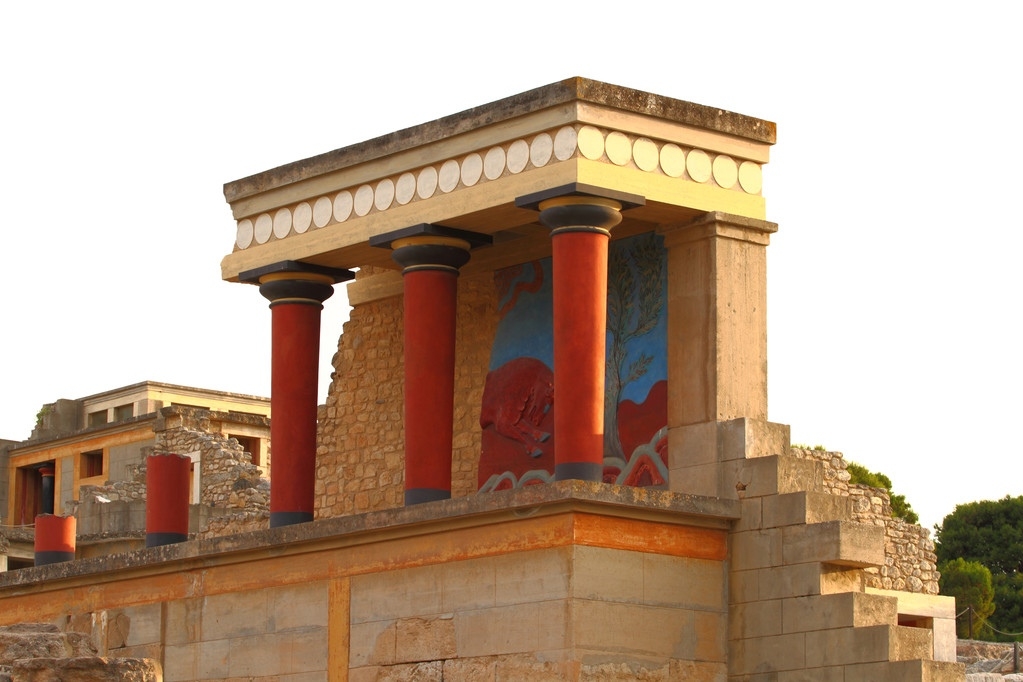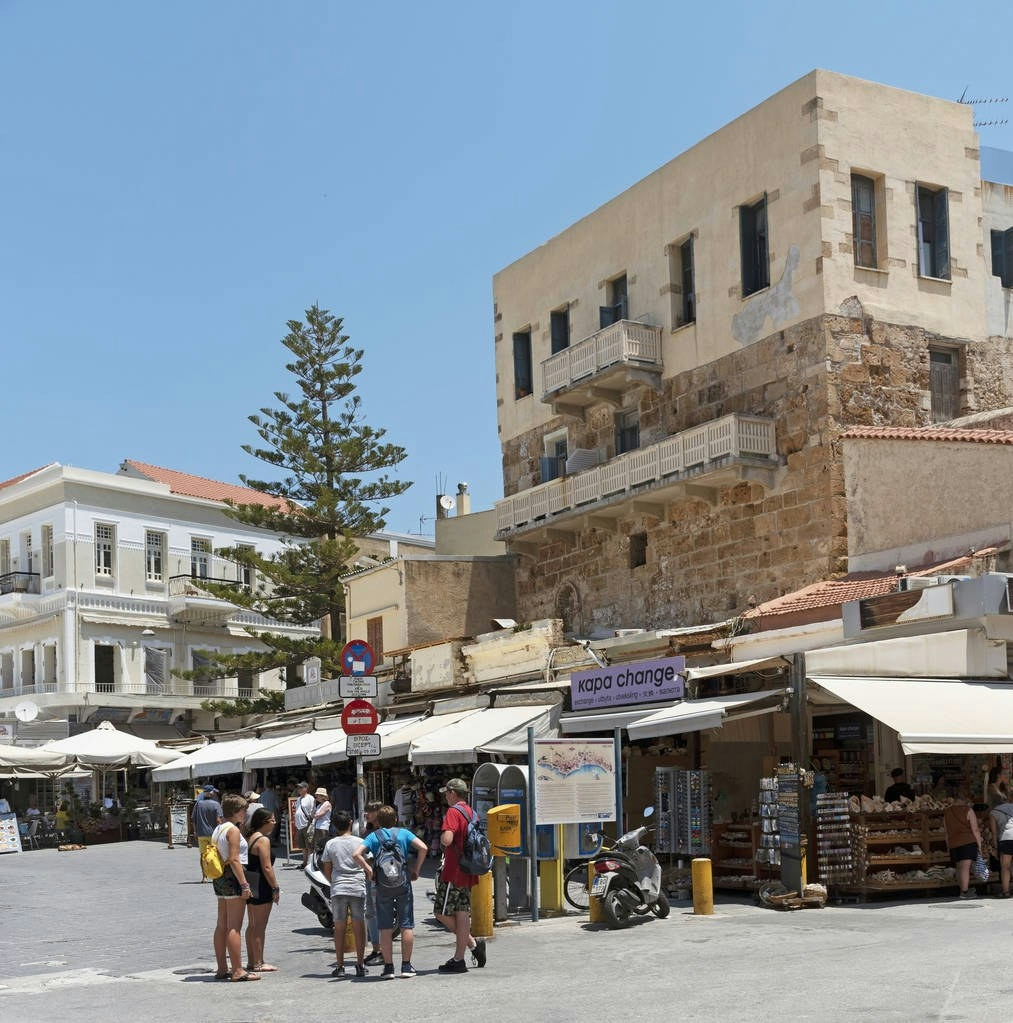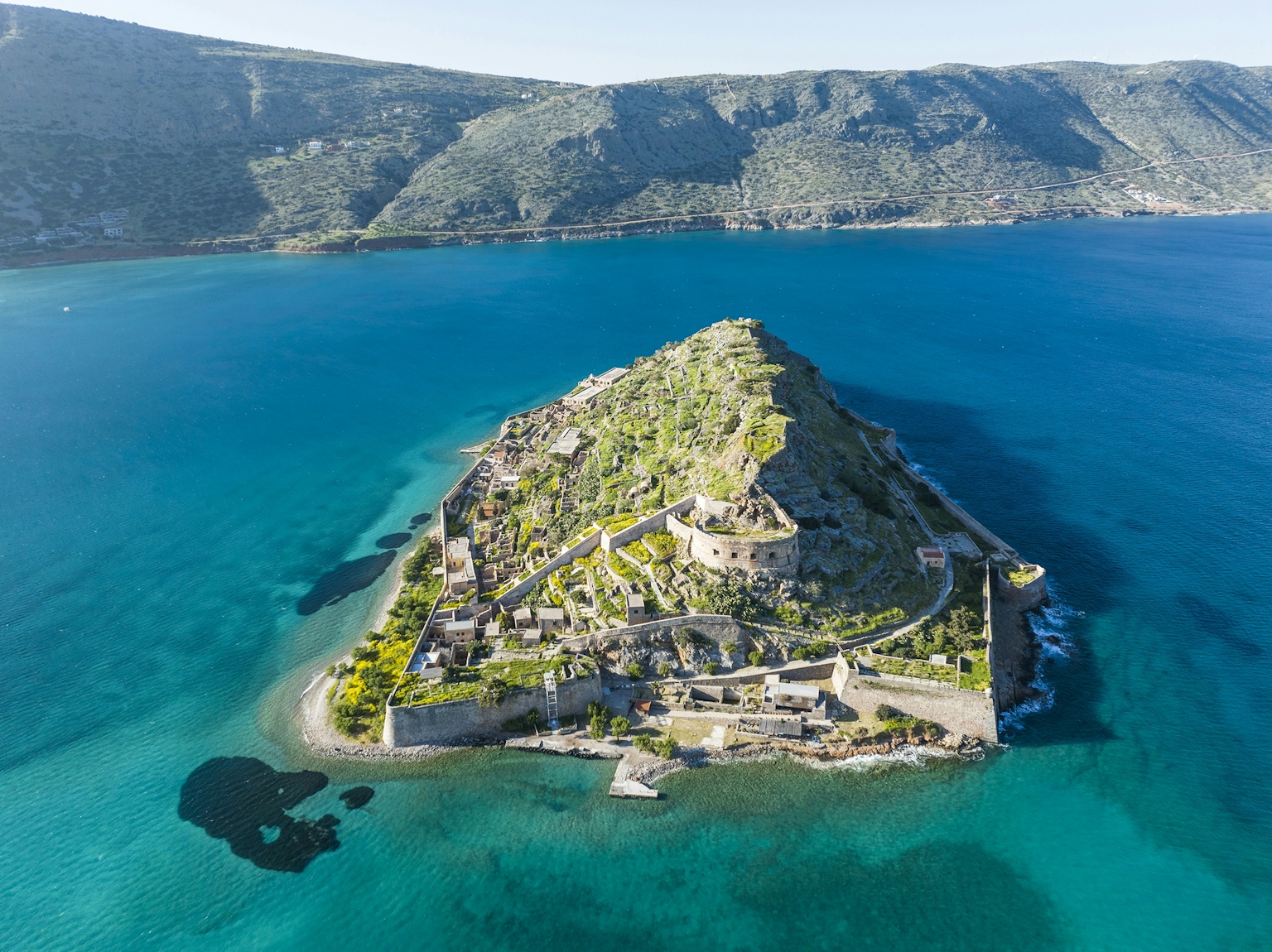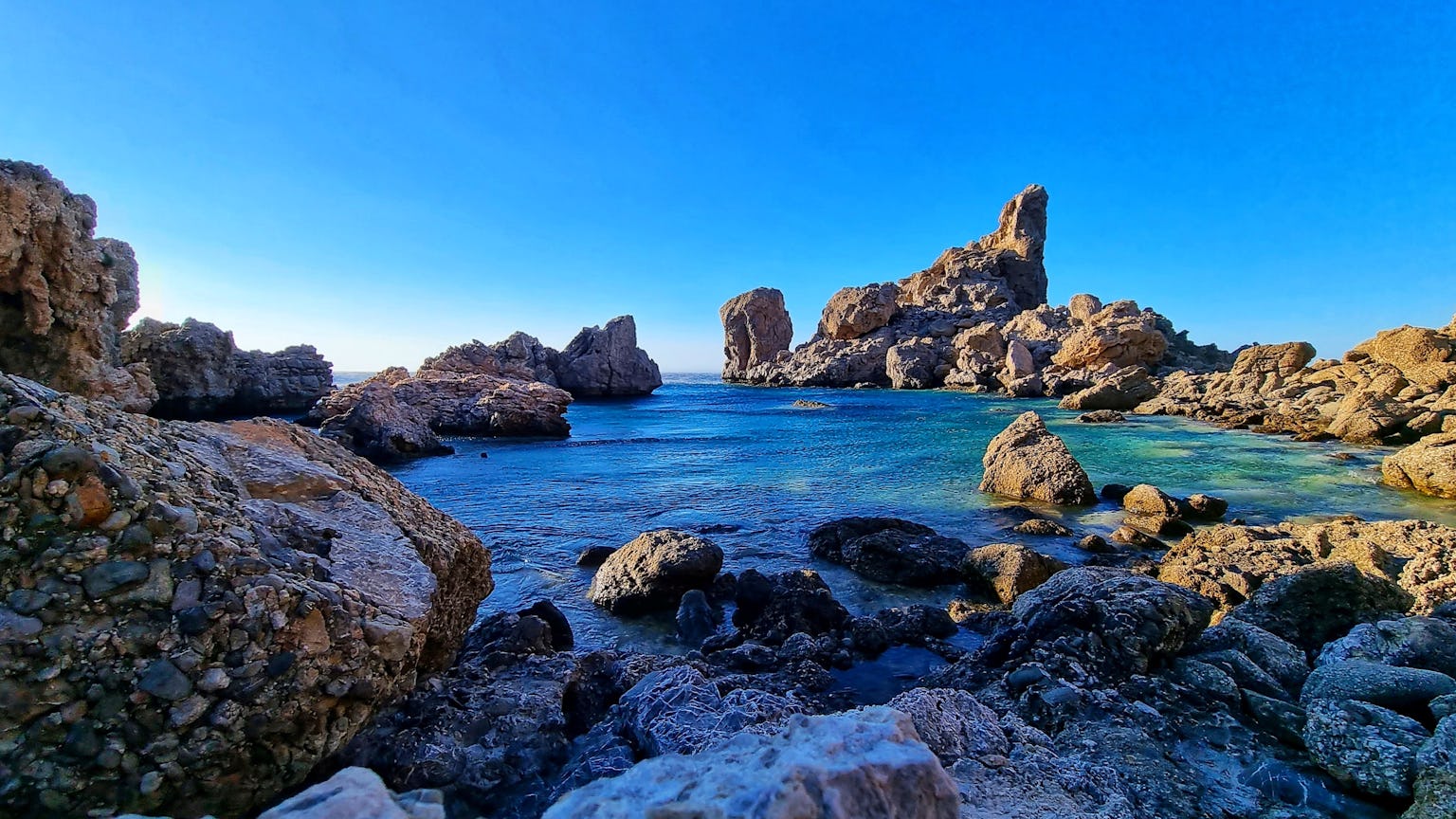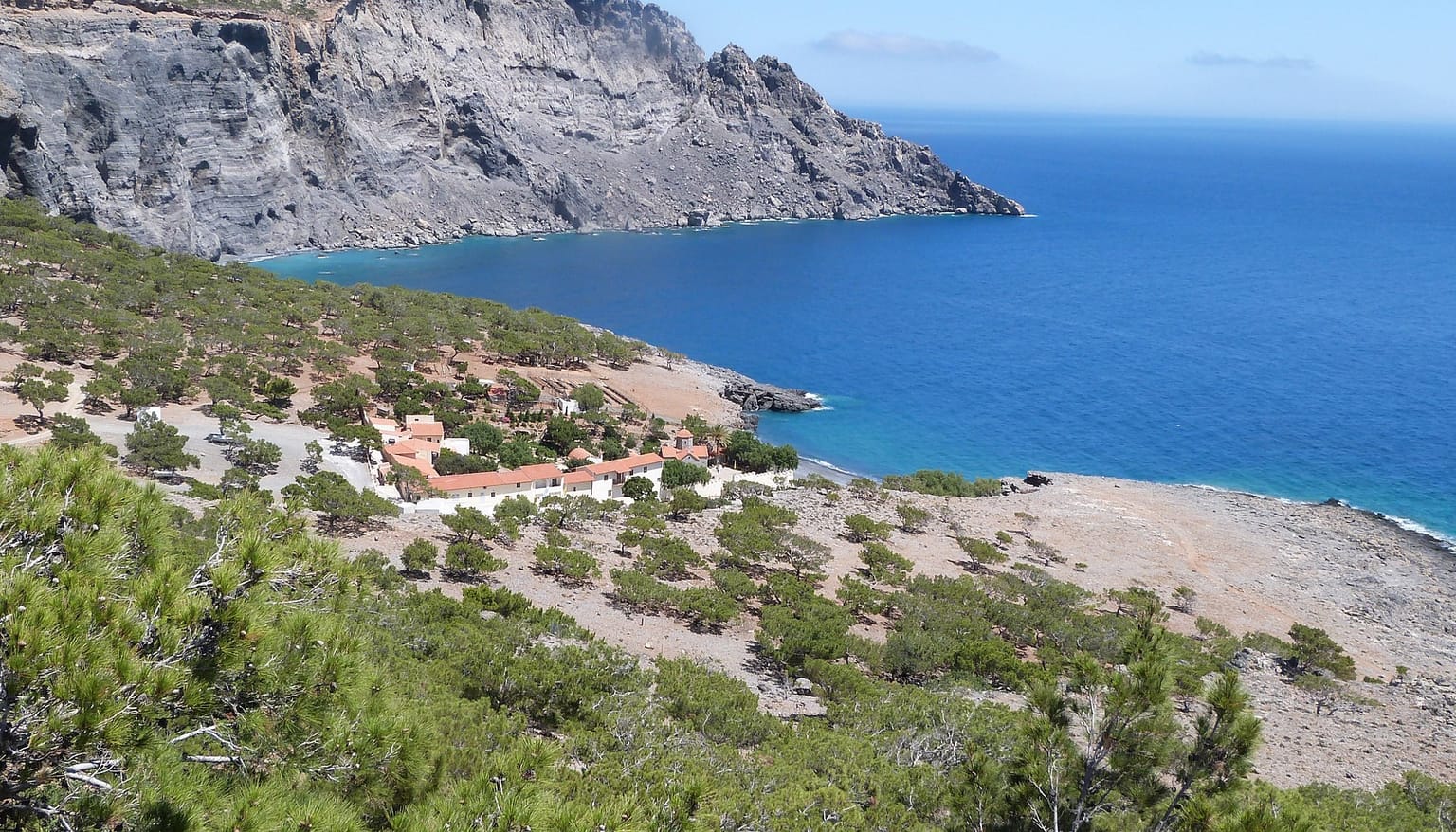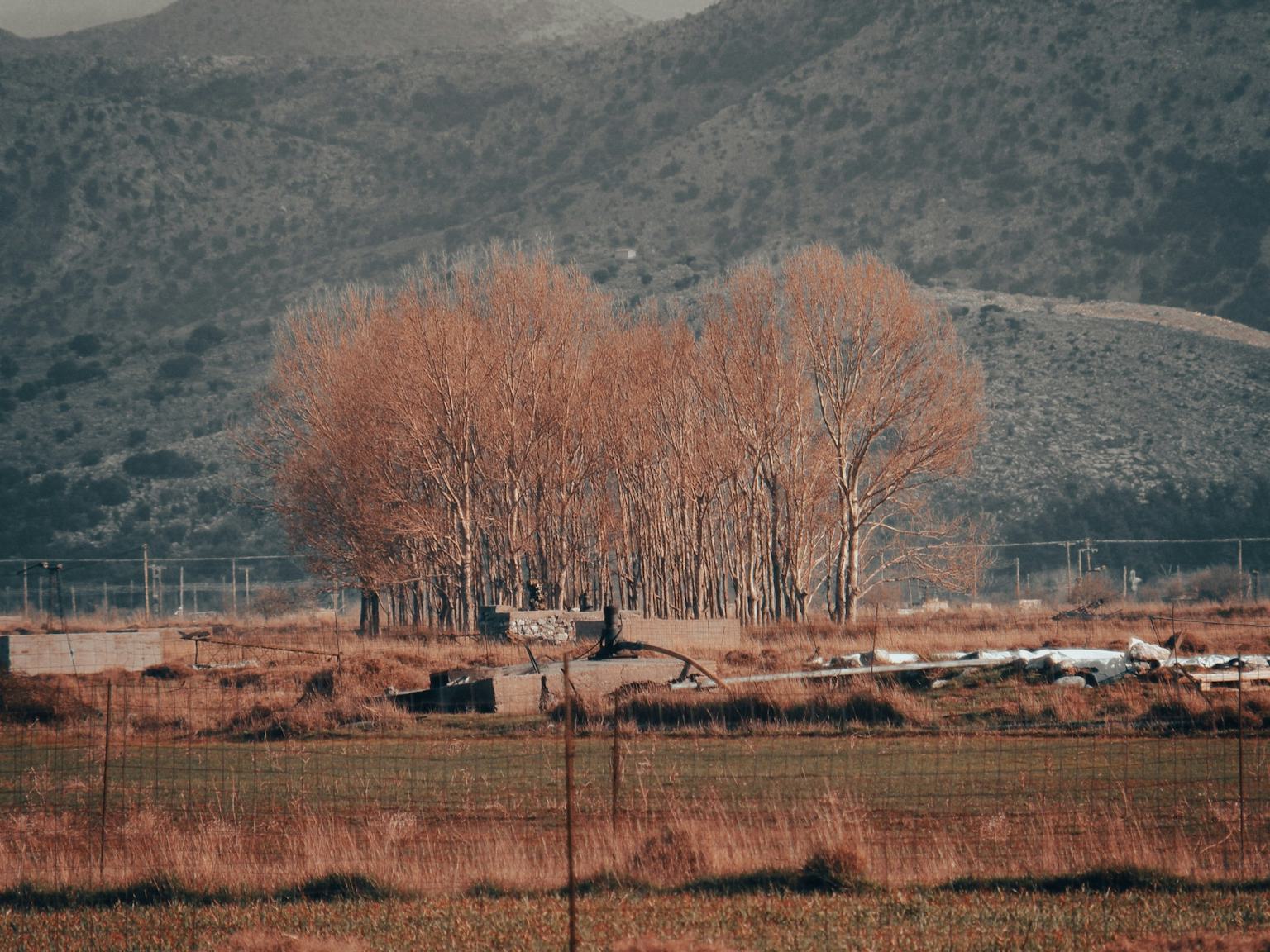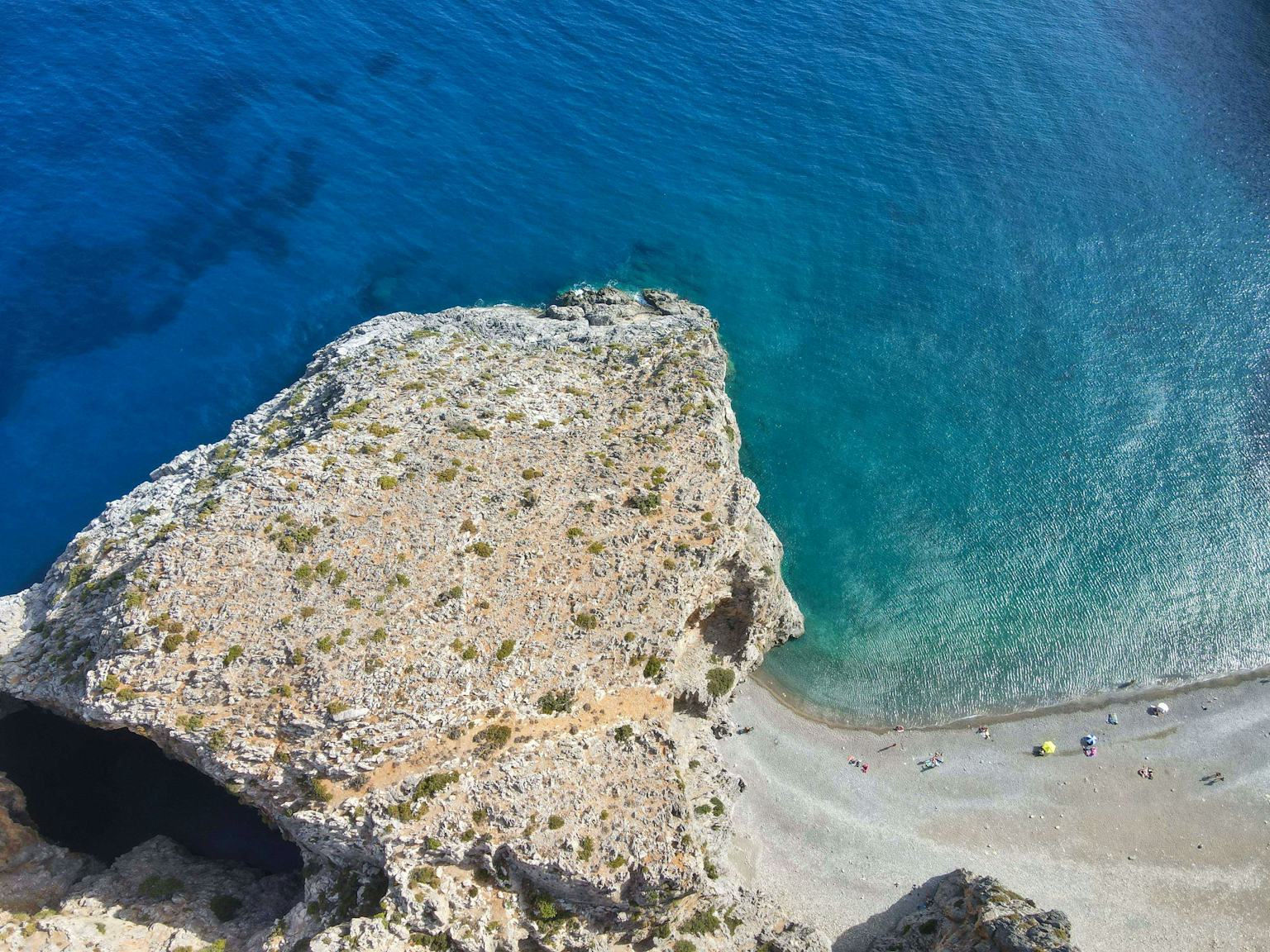Vaulted Tomb at Platyskinos
Art & Culture




ABOUT
At Platyskinos, archaeologists have unearthed an underground vaulted tomb with a corridor, a unique discovery in Eastern Crete from the Bronze Age and exceedingly rare across the entire island. Dating back to the period 1400-1220 BC, it was utilised for over a century.
A monumental 9 m long road leads to the entrance of the tomb. The chamber itself is circular, with a diameter of 4.08 m and a height of 4.16 m. The dome is constructed using large boulders and has an almost conical shape. Just opposite the main entrance of the tomb, there is a second smaller entrance, which was interpreted as an opening for symbolic communication between the deceased and the other world. However, it's possible that this entrance was intended for a side chamber, the construction of which was never completed.
Info: Wikipedia
Photos: Wikimedia Commons
see also

Minoan Villa in the Village of Achladia
In the village of Achladia in the Municipality of Sitia, archaeologists have discovered a Minoan villa.
According to Wikipedia, in 1952, N Platon conducted a small trial excavation at the site called Riza, where a sturdy ancient wall was already visible. During the excavation, the outer walls of a house made of large hewn stones emerged.
In 1959, he continued the excavation and fully exposed the building, revealing it to be a highly significant agricultural villa from the Minoan era. Dating back to 1600-1550 BC, the villa had a lifespan of approximately half a century and was probably destroyed by an earthquake.
Photos: Wikimedia Commons
In the village of Achladia in the Municipality of Sitia, archaeologists have discovered a Minoan villa.
According to Wikipedia, in 1952, N Platon conducted a small trial excavation at the site called Riza, where a sturdy ancient wall was already visible. During the excavation, the outer walls of a house made of large hewn stones emerged.
In 1959, he continued the excavation and fully exposed the building, revealing it to be a highly significant agricultural villa from the Minoan era. Dating back to 1600-1550 BC, the villa had a lifespan of approximately half a century and was probably destroyed by an earthquake.
Photos: Wikimedia Commons

Vaulted Tomb at Platyskinos
At Platyskinos, archaeologists have unearthed an underground vaulted tomb with a corridor, a unique discovery in Eastern Crete from the Bronze Age and exceedingly rare across the entire island. Dating back to the period 1400-1220 BC, it was utilised for over a century.
A monumental 9 m long road leads to the entrance of the tomb. The chamber itself is circular, with a diameter of 4.08 m and a height of 4.16 m. The dome is constructed using large boulders and has an almost conical shape. Just opposite the main entrance of the tomb, there is a second smaller entrance, which was interpreted as an opening for symbolic communication between the deceased and the other world. However, it's possible that this entrance was intended for a side chamber, the construction of which was never completed.
Info: Wikipedia
Photos: Wikimedia Commons
At Platyskinos, archaeologists have unearthed an underground vaulted tomb with a corridor, a unique discovery in Eastern Crete from the Bronze Age and exceedingly rare across the entire island. Dating back to the period 1400-1220 BC, it was utilised for over a century.
A monumental 9 m long road leads to the entrance of the tomb. The chamber itself is circular, with a diameter of 4.08 m and a height of 4.16 m. The dome is constructed using large boulders and has an almost conical shape. Just opposite the main entrance of the tomb, there is a second smaller entrance, which was interpreted as an opening for symbolic communication between the deceased and the other world. However, it's possible that this entrance was intended for a side chamber, the construction of which was never completed.
Info: Wikipedia
Photos: Wikimedia Commons

Minoan Farmhouse in Zou
In 1955, Nikolaos Platon conducted excavations in the area before the inclusion of the settlement of Zou in the Municipality of Sitia. There, one encounters the ruins of a Minoan farmhouse.
The building, dating back to the Middle Minoan period, was likely two-storey and comprised over 30 rooms. In close proximity to the farmhouse, a burial cave was discovered, dating back to the Middle Minoan IIIb-Late Minoan era.
Info: Wikipedia
In 1955, Nikolaos Platon conducted excavations in the area before the inclusion of the settlement of Zou in the Municipality of Sitia. There, one encounters the ruins of a Minoan farmhouse.
The building, dating back to the Middle Minoan period, was likely two-storey and comprised over 30 rooms. In close proximity to the farmhouse, a burial cave was discovered, dating back to the Middle Minoan IIIb-Late Minoan era.
Info: Wikipedia

Church of the Holy Apostles in Kato Episkopi
The church of the Holy Apostles is situated on the western boundaries of the small settlement of Kato Episkopi, likely the seat of the Diocese of Sitia during the second Byzantine period.
It is a tripartite building with a dome.
As revealed during recent restoration works, the building was initially a bath, similar in form to the one in Episkopi of Ierapetra. In the 15th century, with minor modifications, the bath was converted into the Church of the Holy Apostles.
Info: OrthodoxCrete
Photo: Wikipedia
The church of the Holy Apostles is situated on the western boundaries of the small settlement of Kato Episkopi, likely the seat of the Diocese of Sitia during the second Byzantine period.
It is a tripartite building with a dome.
As revealed during recent restoration works, the building was initially a bath, similar in form to the one in Episkopi of Ierapetra. In the 15th century, with minor modifications, the bath was converted into the Church of the Holy Apostles.
Info: OrthodoxCrete
Photo: Wikipedia
Search
for
— things to do or a local business
Search
for
— things to do or a local business
Trends
